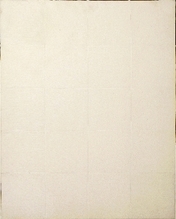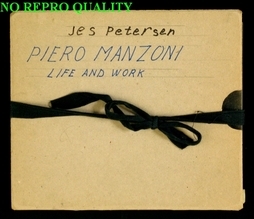Achrome
Piero Manzoni
In his Achromes, begun in 1957 Manzoni sought to eliminate any reference to narrative, including color. Thus he titled his work “achrome” or “without color”. Manzoni covered the canvas in kaolin, a clay substance used in making china, which dries very slowly. He considered kaolin colorless. Manzoni allowed the composition to set. The weight of the object itself influenced the final appearance. In doing so the artist’s role in the work is minimized. "We absolutely cannot consider a painting to be a space in which we project our mental sets, but rather as our area of liberty, where we can go in search of our first images. Images that are as absolute as possible, which cannot be valued for what they recall, explain, express, but only inasmuch as what they are: being." Manzoni’s Achromes are a direct response to Yves Klein’s Monochromes, which were first exhibited in January 1957.

Makers
Collection
Production date
1959
Library
Click here to view 18 related documents
Dimensions
77.3 x 91 x 6.6cm.
Material
kaolin on wrinkled canvas
Object number
A 28686



